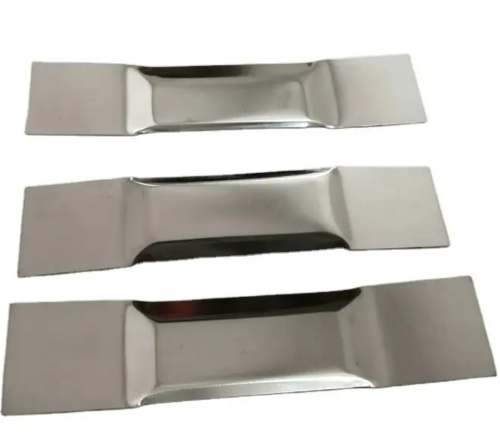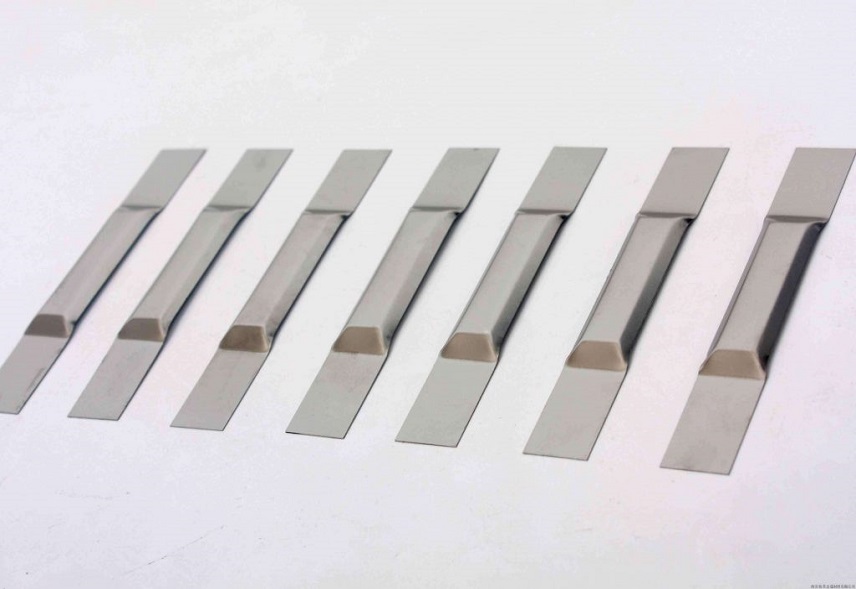Introduction
Molybdenum boats, often crafted from high-purity molybdenum material, are versatile tools with a wide range of applications across various industries. These boat-shaped containers are valued for their exceptional heat resistance, high melting point, and robustness. In this article, we’ll explore the uses and material properties of molybdenum boats, shedding light on their importance in scientific, industrial, and technological advancements.

Material Properties of Molybdenum
Molybdenum boats share and capitalize on the exceptional properties of molybdenum. These properties make molybdenum boats indispensable in various high-temperature and demanding applications across diverse industries. Here’s a closer look at how the remarkable characteristics of molybdenum contribute to the effectiveness of molybdenum boats:
- High Melting Point: Molybdenum boasts a melting point of approximately 2,623 degrees Celsius (4,753 degrees Fahrenheit), one of the highest among all elements. This property allows molybdenum boats to endure extreme temperatures without structural changes.
- Heat Resistance: Mo’s heat resistance is a result of its high melting point and low thermal expansion, which makes it a reliable material for applications involving rapid temperature changes.
- Excellent Thermal Conductivity: Mo also exhibits excellent thermal conductivity, ensuring efficient heat transfer within the boat. This property is critical for achieving uniform temperature distribution in various processes.
- Corrosion Resistance: Mo is highly resistant to corrosion, which is essential in applications where contact with reactive materials or corrosive environments is a concern.
Molybdenum Boats Applied in Evaporation Processes
Molybdenum boats find a multitude of applications across diverse industries, and one of their key uses is in evaporation processes. These boats are specially designed to excel in such processes, where the controlled deposition of thin films or coatings onto substrates is essential.
- Semiconductor Manufacturing: Molybdenum boats are widely employed in semiconductor manufacturing for thin-film deposition processes. They play a crucial role in depositing materials like silicon dioxide, metal layers, and other semiconductor components onto silicon wafers. The boats’ high melting point and excellent thermal conductivity enable precise and uniform film deposition, contributing to the production of advanced microelectronics.
- Optical Coating: Mo boats are used in optical coating applications, where thin films of materials with specific optical properties are deposited onto lenses, mirrors, or other optical components. These coatings enhance light transmission, reduce reflections, and provide anti-scratch or anti-reflective properties. Molybdenum boats’ resistance to high temperatures and chemical stability make them ideal vessels for these precise optical coating processes.
- Solar Cell Production: In the manufacture of solar cells and photovoltaic devices, molybdenum boats are employed to deposit various layers of thin-film materials onto substrates. These layers can include absorber materials like cadmium telluride (CdTe) or copper indium gallium selenide (CIGS), which convert sunlight into electricity. Molybdenum boats’ ability to handle the high-temperature requirements of these processes is vital for efficient solar cell production.
- Thin-Film Deposition for Electronics: These boats are also used in the electronics industry for depositing thin films onto electronic components, such as integrated circuits and microchips. This ensures the precise fabrication of electronic devices and components, where even nanoscale variations can impact performance. Molybdenum’s thermal properties enable the controlled deposition of these crucial thin films.
- Materials Research: Molybdenum boats are indispensable tools in materials research laboratories. Scientists use them for physical vapor deposition (PVD) experiments to deposit thin films of various materials onto substrates. These experiments help researchers understand material properties, develop new coatings, and advance knowledge in fields like surface science and nanotechnology.
Conclusion
Molybdenum boats are indispensable tools in industries ranging from semiconductor manufacturing to materials research. Their exceptional material properties, including high melting point, heat resistance, thermal conductivity, and corrosion resistance, make them reliable vessels for the demanding requirements of evaporation processes. Whether in the semiconductor industry, optics, renewable energy, electronics, or research, molybdenum boats contribute significantly to technological advancements and product innovation.
Molybdenum boats are available in a diverse range of forms, purities, sizes, and prices, catering to the specific needs of various applications and industries. Stanford Advanced Materials (SAM) is a trusted and reputable supplier of molybdenum boats, sputtering targets, and a wide array of evaporation materials and containers. If you are interested, please do not hesitate to send us an inquiry.





